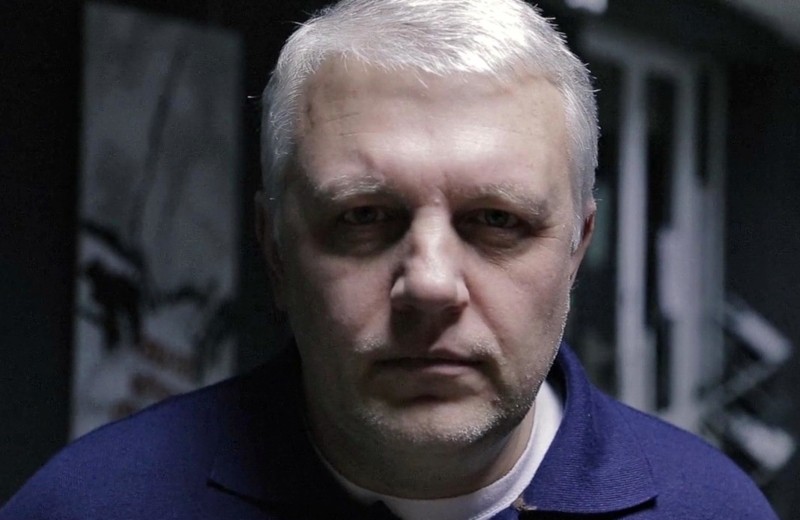When the prominent Belarusian-Ukrainian journalist Pavel Sheremet was assassinated in Kyiv on July 20, his colleagues had little trust in the official investigation.
They had their reasons: Ukraine’s authorities have had no success in solving high-profile murders of journalists. Their best-known failure is the case of Ukrainska Pravda news website editor Georgy Gongadze, who was strangled and beheaded by police officers on Sept. 16, 2000. Only the immediate perpetrators were found and jailed – and even that took more than 10 years. Those who ordered the killing have never faced justice. Ex-President Leonid Kuchma was a suspect in the case for a short time in 2011.
So when Sheremet, who also worked for Ukrainska Pravda, was killed by a car bomb, four Ukrainian journalists from the Organized Crime and Corruption Reporting Project, a Kyiv Post partner, and the investigative team Slidstvo.info decided to launch a parallel investigation.
Their findings were released as a documentary on May 10. In the 49-minute film, called “Killing Pavel,” journalists show that police not only missed crucial clues, they found Ukraine’s SBU state security service may be linked to the crime.
The 49-minute documentary “Killing Pavel” advances the investigation into the July 20 murder of Pavel Sheremet, a journalist with Ukrainska Pravda, and raises questions about whether Ukraine’s powerful law enforcement agency, the Security Service of Ukraine, was involved in the assassination.
‘A matter of honor’
Over nine months the four journalists – Anna Babinets, Dmytro Gnap, Olena Loginova and Kyiv Post staff writer Vlad Lavrov – meticulously reconstructed the events of the night when the bomb was planted under Sheremet’s car.
They found details that apparently went unnoticed by police investigators. They found key witnesses who weren’t interrogated – indicating either a lack of effort or sloppiness in the official investigation.
That goes against then-Chief of National Police Khatia Dekanoidze’s promise to investigate the case as “a matter of honor” – a pledge that she gave at the scene of the crime just after Sheremet was killed.
Dekanoidze’s promise was echoed by similar ones from President Petro Poroshenko, Prosecutor General Yuriy Lutsenko, and Interior Minister Arsen Avakov.
However, none of them agreed to be interviewed for the film.
Dekanoidze, who stepped down as police chief in November, citing political pressure, appears in the film. She defends the police investigators’ job, but speaks vaguely and appears forgetful or uninformed about specific details of the case.
Missed clues
The journalists collected hundreds of hours of surveillance video from the cameras in the area around Ivana Franka Street, where Sheremet lived and was murdered.
Previously released police footage showed two alleged assassins, a man and a woman, who planted the bomb in Sheremet’s car in the early hours of July 20. In the video that was used to look for the suspects, they appear to be wearing gray tracksuits.
However, a color video that the journalists obtained from a camera installed one kilometer from where the police said they lost track of the suspects showed that the tracksuits are in fact black, and the man’s hoodie has a distinctive white logo on the back.
This information, it is noted in the film, would have been helpful in looking for the suspects. But it was never revealed to the public.
Using this new information, the journalists identified the man and the woman, who appear to be the same people from the nighttime footage, waiting near Sheremet’s house next morning – apparently to detonate the bomb after the journalist got into the car.
The journalists also found a taxi driver who was briefly at the scene when the bomb was planted, and who said that police never contacted him.
SBU link
But the most interesting detail came with surveillance footage of a gray Skoda car and a white Mercedes. Both arrived on Ivana Franka Street and parked just some 120 meters away from Sheremet’s car shortly before midnight on the night before the murder. The Skoda carried a driver and a passenger, who got in and out of the vehicle and walked down the street and back to the car several times over the next three hours.
Some 40 minutes after the pair in black tracksuits planted the bomb, at around 2:40 a.m., both cars left.
The journalists used the help of the UK-based Bellingcat investigative collective to eliminate noise from the video image of the car’s license plate, and identify its number. It took two weeks and the processing of 500 separate frames of the video to make the number legible.
The Skoda car was then traced to its registered owner, a woman who first said she had nothing to do with it, but later admitted that an acquaintance asked her to register the car he used in her name.
The acquaintance turned out to be a man called Ihor Ustymenko. He asked to look at the surveillance video and admitted one of the men in it was him. However, he refused to say who he was with, and gave an extremely vague and inconsistent explanation of why he was on Ivana Franka Street that night.
The journalists discovered that Ustymenko, who eventually stopped answering phone calls, was an SBU officer – at least, as of 2014. However, the head of the SBU, Vasily Grytsak, refused to be interviewed for the film.



